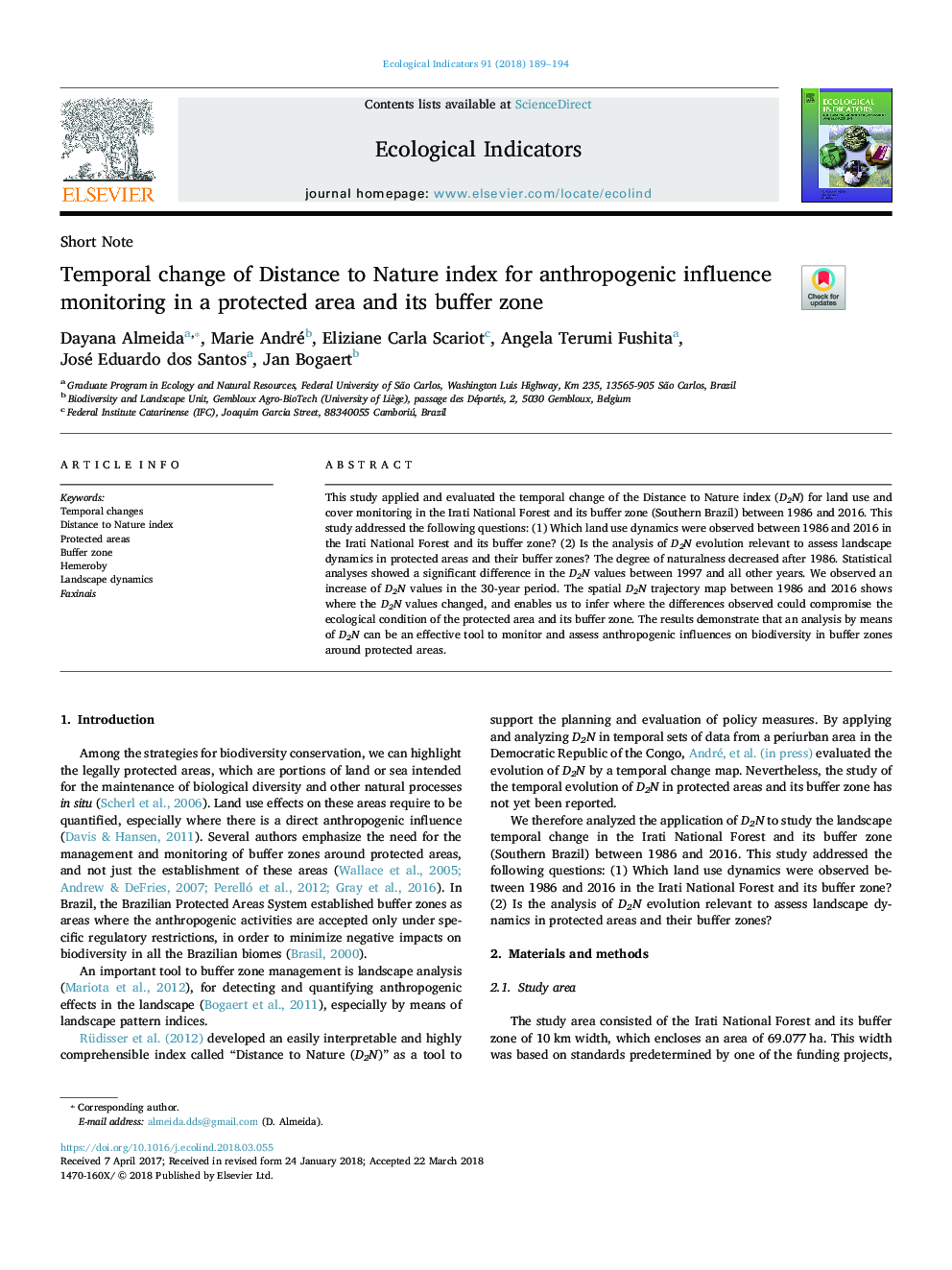| Article ID | Journal | Published Year | Pages | File Type |
|---|---|---|---|---|
| 8845305 | Ecological Indicators | 2018 | 6 Pages |
Abstract
This study applied and evaluated the temporal change of the Distance to Nature index (D2N) for land use and cover monitoring in the Irati National Forest and its buffer zone (Southern Brazil) between 1986 and 2016. This study addressed the following questions: (1) Which land use dynamics were observed between 1986 and 2016 in the Irati National Forest and its buffer zone? (2) Is the analysis of D2N evolution relevant to assess landscape dynamics in protected areas and their buffer zones? The degree of naturalness decreased after 1986. Statistical analyses showed a significant difference in the D2N values between 1997 and all other years. We observed an increase of D2N values in the 30-year period. The spatial D2N trajectory map between 1986 and 2016 shows where the D2N values changed, and enables us to infer where the differences observed could compromise the ecological condition of the protected area and its buffer zone. The results demonstrate that an analysis by means of D2N can be an effective tool to monitor and assess anthropogenic influences on biodiversity in buffer zones around protected areas.
Related Topics
Life Sciences
Agricultural and Biological Sciences
Ecology, Evolution, Behavior and Systematics
Authors
Dayana Almeida, Marie André, Eliziane Carla Scariot, Angela Terumi Fushita, José Eduardo dos Santos, Jan Bogaert,
